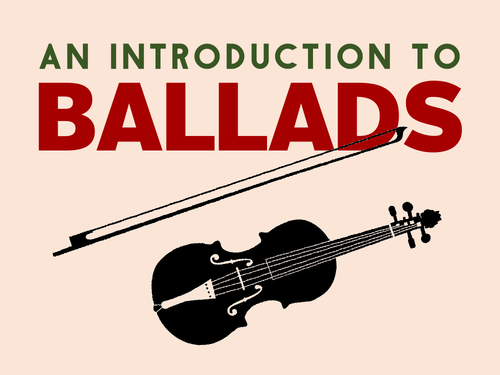
This 14-slide lesson offers students an introduction to the ballad form of poetry.
Students explore the history behind the ballad form, focusing on its sensationalist subject matter and significant use of rhyme and rhythm. We discuss how appreciating the oral nature of performed ballads is vital to understanding the rhythm and sound of the poems, and we think about which subjects commonly recur in popular ballads. A starter activity encourages students to consider rhyme and the aural nature of words.
Students learn how the ballad form developed into the ‘Lyrical Ballads’ of Wordsworth and Coleridge, popularising the form that we now recognise as poetic ballads. The rise of modern ‘power ballads’ in pop music is also noted.
An example of a ballad (by Wordsworth) is given for students to deconstruct its rhythm and rhyme scheme. Students then have a go at writing their own ballad. Another example - this time an original ballad (by yours truly) - is provided to help students with their own ballads.
Questions and discussion points are included for students.
This lesson is ideal for those studying the ballad form or poetry in general in KS3.
PowerPoint is saved as PDF.
Something went wrong, please try again later.
This resource hasn't been reviewed yet
To ensure quality for our reviews, only customers who have purchased this resource can review it
Report this resourceto let us know if it violates our terms and conditions.
Our customer service team will review your report and will be in touch.
